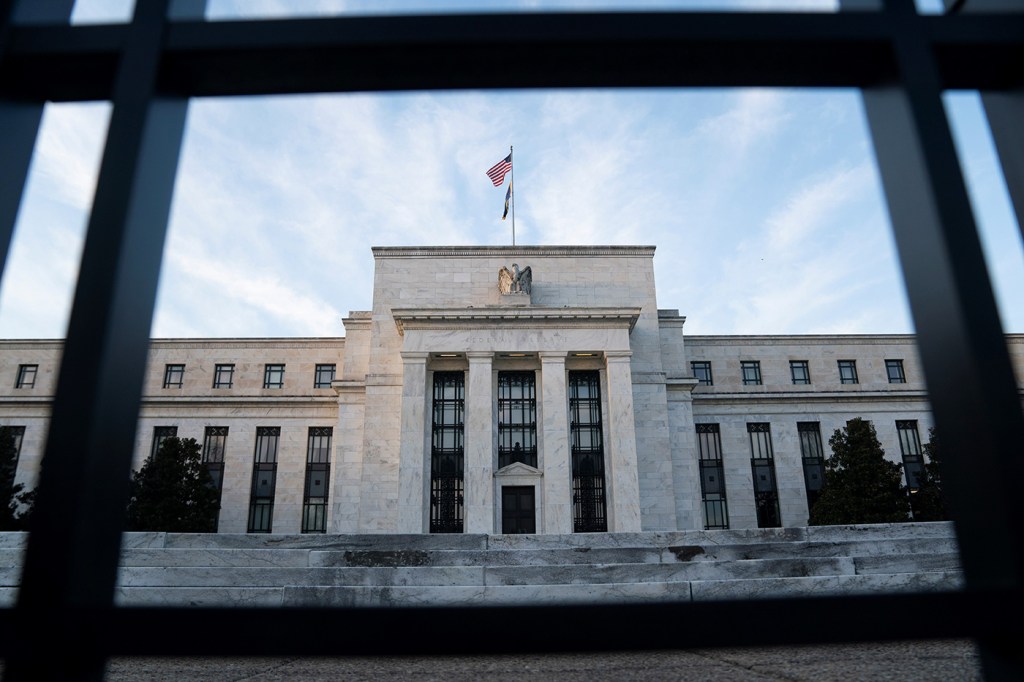What does the US have to do to avoid a recession?

Is the U.S. economy headed into a recession? The question comes as consumer prices have climbed to their highest point in more than three decades—and as worries over inflation prompt a response from central banking authorities.
The looming question also comes amid continued supply-chain disruptions brought on by the COVID-19 pandemic, which have been exacerbated by Russia’s war in Ukraine. A recessionary period, defined as two or more consecutive quarters of negative GDP growth, may be inevitable in the coming months as the Federal Reserve plans to raise interest rates in an effort to crack down on inflation, Northeastern economists say.
“Unfortunately, we are staring down the barrel of a recession,” says Nancy Kimelman, assistant teaching professor in economics at Northeastern.
That’s because the federal government’s aggressive response to soaring unemployment at the onset of the pandemic has accelerated inflation, she says. Those response measures, which included lowering interest rates to zero and stimulus funds to struggling Americans, among other policies, ultimately created more demand in the economy—and in particular, in the labor market—than can be sustained.
Inflation occurs when overall prices increase over a period of time, thereby diminishing the purchasing power of consumers—or the number of goods and services they can afford. In other words, it’s when the economy overheats, Kimelman says.
“The [Federal Reserve] didn’t just lower interest rates,” Kimelman says. “[It] provided support to myriad financial institutions in this country. These important policy decisions—both by the central bank, the treasury and the White House—no doubt helped millions of people. The issue now is whether these policies have overstayed their welcome.”

Nancy Kimelman, assistant teaching professor in economics at Northeastern. Courtesy Photo
Kimelman says that such policies should have been reversed months ago—when the pandemic recovery had already been well underway after the initial downturn. As a result, “we ended up with an economy that is a little bit too strong.”
“I think we could have avoided the fear of recession and the kind of inflation we’re seeing right now,” she says.
The Federal Reserve raises interest rates to reduce consumers’ borrowing power and, therefore, reduce demand for certain goods and services. Kimelman says this puts downward pressure on prices, pushing them down over time.

University Distinguished Professor of Economics and Social Policy William Dickens poses for a portrait. Photo by Matthew Modoono/Northeastern University
“The issue is you don’t get rid of inflation by waving your hands at it,” Kimelman says. “The way to get it under control is by reducing demand. When demand is strong, prices rise. To spin inflation out of the economy, what has to happen is we have to wean ourselves off of spending too much, and over time that will reduce the rate of inflation.”
A certain amount of inflation, however, appears to be unstoppable, says William Dickens, university distinguished professor of economics and social policy at Northeastern. The global supply-chain crisis is also fueling the rise in prices—something over which monetary authorities have little control, he says. While the pandemic has, to some degree, lessened in the U.S., it is still creating havoc in supply chains worldwide.
Turmoil in the fuel and energy markets has also contributed to inflation, Dickens says. “Attempts to isolate Russia, combined with the uncertainty over future oil supplies, have raised the price of oil and, therefore, all energy sources,” he says.
Dickens emphasizes that inflation is probably less driven by demand and more by these “transitory” forces, such as the supply-chain shocks, the pandemic, and the war. Although, he says, economists have underestimated how long some of these disruptions would go on.
“If this inflation was entirely generated domestically by overly expansive fiscal policy, it would be easy for the Fed to cap that off—and they’d have a pretty good idea of how to go about doing it,” Dickens says.
He warns that if the Fed aggressively goes after inflation by raising interest rates, as it did in the 1980s, it risks overshooting and bringing on a recession.
“They will certainly create a recession if they try to fight it,” Dickens says.
For media inquiries, please contact media@northeastern.edu.






